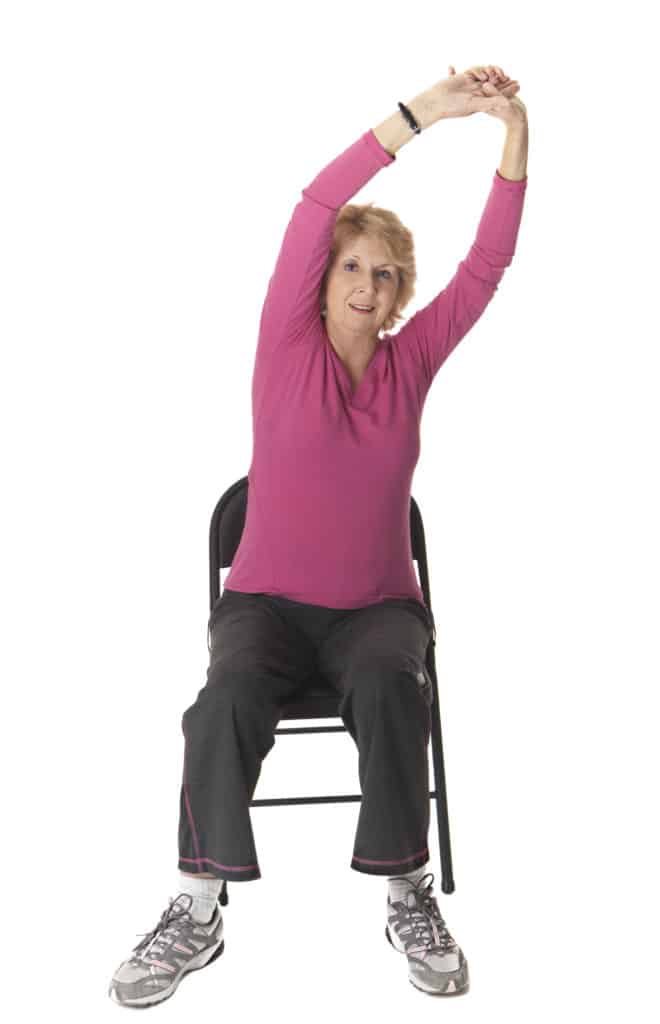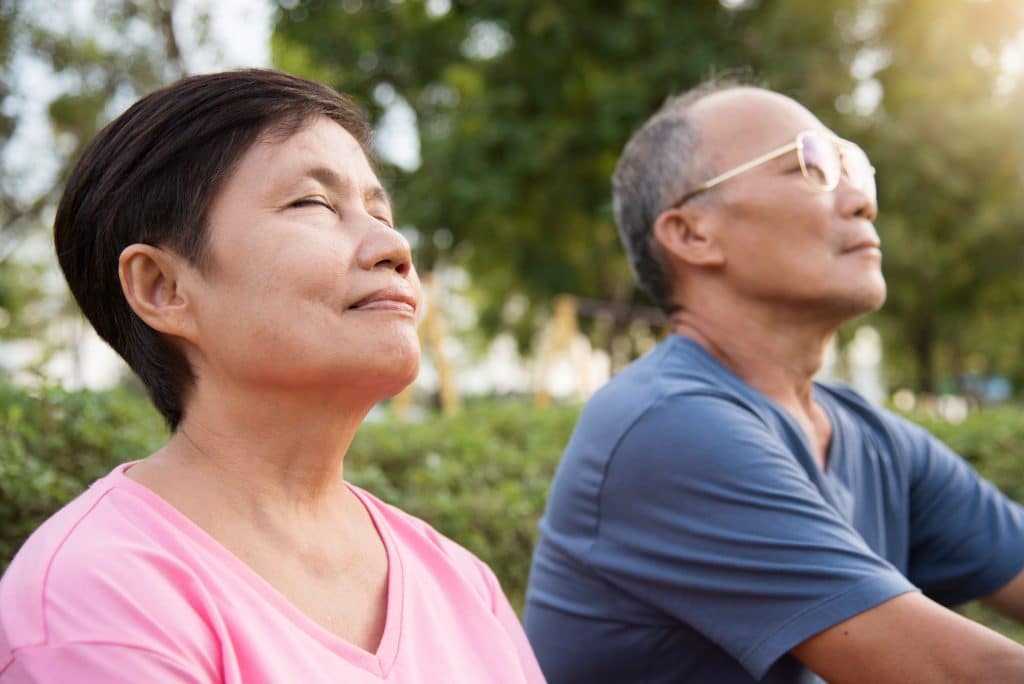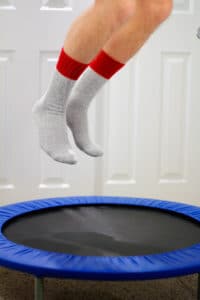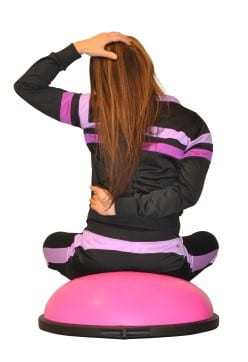
- Breast Cancer Related Lymphedema is detected in 7–77% of patients who undergo axillary lymph node dissection (ALND) due to transection of lymph vessels as depicted in selected studies.
- Sentinel lymph node biopsy (SLNB) significantly reduces this risk to 3–7%.
- This incidence is based on multiple factors such as extent of disease, treatment modality (i.e. radiotherapy), and duration of follow-up.
U.S. National Library of Medicine/National Institute of Health
The amount of lymphatic fluid that is transported through the affected areas is directly related to the amount of blood flow to those areas. Heavy lifting with the affected arm or leg, extreme climatic temperatures, extreme water temperatures when bathing, showering, or washing dishes, hot tubs, saunas, sunburn, and vigorous repetitive movements against resistance, all of which will increase blood and lymphatic flow to the affected area, should be avoided. When a post-operative node dissection patient is fighting off an infection there will typically be an increase in lymphatic load as well as a decrease in transport capacity. Cellulitis and lymphangitis can inflame the lymphatic vessels, making them dysfunctional to transport lymphatic fluid. When clients are traveling by airplane, it is important to wear a fitted sleeve or stocking due to pressure changes which allow fluid to pool in the extremities. Due to the lack of movement during flight, the vessels which normally pump the lymph towards the regional lymph nodes are working at a very low level. Therefore, it is not only important to wear compression garments, but to move around the cabin whenever possible to prevent the pooling that can increase lymphatic load. While each of these precautions, as well as those listed on the following pages, make perfect sense, there are several other factors that can also influence a potential lymphedema outcome. These include, but are not limited to, the number of lymph nodes that were removed from a given location, the extent of surgical disruption and how many nodes were removed, the amount of lymphatic scarring from radiation, age, and the degree of obesity.
Lymphedema is swelling produced by an accumulation of lymph fluid in the tissue. For breast cancer clients, the swelling occurs in the arm of the affected side due to damage to the lymph vessels in the armpit area caused by the removal of the axillary lymph nodes or from radiation to that area. For prostate cancer, or other lower extremity cancers, the swelling can take place in the abdomen, pelvis, or in either leg or foot. The job of the lymphatic vessels is to drain fluid from the tissue cells in the body, along with protein molecules, bacteria, cellular waste products, and other unusable matter. This protein-rich fluid, called lymph once it is in the lymphatic system, travels in one direction: toward the heart. It is transported through the lymphatic vessels to the lymph nodes, where it is filtered and cleansed before returning to the venous system and moving on to the heart. In the heart, the fluid is simply returned to the blood to be recirculated by the body.
If the lymphatic system has been injured, as in the case of lymph node dissection or radiotherapy (for all types of cancer), the lymph can become backed up. If untreated, the backed-up fluid can provide a breeding ground for bacteria that can result in infection and can delay wound healing. A long-term accumulation of this fluid eventually results in thick and hardened tissues (fibrosis), which creates further resistance to draining the fluid from the limb. While lymphedema may not occur immediately after surgery, it can occur at any time during the client/patient’s life after cancer treatment. Sometimes extensive trauma can be the contributing factor while at other times it may be due to a bug bite, cat scratch, or burn.
Radiotherapy also increases the chance of developing lymphedema. Radiotherapy is generally recommended to clients with a high risk of recurrence of cancer, such as those who have large, aggressive tumors. It is also recommended for those whose lymph nodes test positive for cancer cells or show an incidence of microscopic residual disease after surgery. In most cases when breast conserving surgery is performed, radiotherapy is given to the rest of the breast tissue. Even after a modified radical mastectomy, radiotherapy is recommended if a patient is at high risk. Because lymph nodes are radiosensitive, radiotherapy depletes the lymphocytes in the nodes and decreases their filtering function and immune function. Lymphedema can only affect the arm where the nodes have been irradiated, not the overall immune system. After radiotherapy, the nodes become scarred and fibrotic, increasing the potential for blockage.
Upwards of five percent of breast cancer clients are afflicted with lymphedema during their first year after surgery. The lifelong rate for affliction is between 8-30%. Although this example if pertaining to breast cancer and a axillary node dissection, it is important to remember that if you have undergone a lymph node dissection or radiation for any type of cancer, you are at risk for lymphedema in that part of your body. With proper education and care, lymphedema can be avoided, or, if it develops, kept well under control. Older individuals and those with poor nutrition face an increased risk, as do individuals with infections. Removal of the nodes and damage to the area prevent the lymph fluid in the arm from draining properly, allowing it to accumulate in the tissue by restricting pathways and causing back-up. It has been well documented that the development of lymphedema after breast cancer surgery and radiotherapy is related to the extent of the lymph node dissection, the extent of the breast surgery, and whether radiotherapy is given to the axilla.
When breast conservation surgery is performed without radiotherapy or a node dissection, there is no incidence of lymphedema. If lymphedema goes untreated, it can result in decreased arm function, decreased range of motion in the arm and shoulder, decreased finger function and numbness in the hand, and swelling of the entire arm, hand, and fingers. In addition, this damage may result in pain and tightness in the area as the lymph vessels close up, tighten, and sometimes snap.
Guarding against infection is extremely important because the affected arm will be more susceptible to infection than the uninfected arm, and infection can cause increased swelling. If you notice any signs of infection, contact your doctor immediately. These signs include swelling, fever, or skin that is red, tender, warm, persistently itchy or blotchy.
There are four stages of lymphedema:
- In stage 0 – also known as the latent or preclinical stage This is a newly added classification. At this stage the patient is at risk of developing lymphedema; however, no swelling or other visible evidence of impaired lymph transport is present.
- In stage 1, when the skin is pressed the pressure will leave a pit that takes some time to fill back in. This is referred to as pitting edema. Sometimes the swelling can be reduced by elevating the limb for a few hours. There is little or no fibrosis at this stage, so it is usually reversible.
- In stage 2, when the swollen area is pressed, it does not pit, and the swelling is not reduced very much by elevation. If left untreated, the tissue of the limb gradually hardens and becomes fibrotic.
- In stage 3, the lymphedema is often referred to as lymphatic elephantiasis. It occurs almost exclusively in the legs after progressive, long-term, and untreated lymphedema. At this stage there may be gross changes to the skin. There may even be some leakage of fluid through the tissue in the affected area, especially if there is a cut or sore. While lymphedema will respond to treatment, at this stage it is rarely reversible. Lymphedema is a very serious condition and should not be taken lightly. It frequently results in complications, such as lymphangitis (a bacterial infection of the lymphatic system), skin changes, fibrosis, and infection. There are even a few life-threatening complications, although rare, such as the development of a rare type of cancer, lymphangiosarcoma, in the affected area. This can occur in clients with long-term, untreated, or improperly treated lymphedema. Unfortunately, this condition requires immediate amputation. Lymphedema may worsen with time if it is not attended to. It can become disabling by stiffening the joints or making the limbs heavy, and may cause significant cosmetic deformities.

One of the most important, and often over looked component of exercise is breathing. Not only does breathing allow precious oxygen to be circulated through the bloodstream, but it is also effective for moving fluid through a gentle pumping action of the abdominal muscles. The fluid is pumped through the central lymphatic vessel in the chest cavity, stimulating the flow of lymph. When you breathe in, using your abdominal muscles, the pressure in the chest cavity changes, because the belly breath moves your diaphragm. When you exhale, the pressure changes once again. This back-and-forth alternation in the pressure acts like a pump on the large lymphatic trunk that runs up through the chest cavity and drains into the venous system of the neck.
Here’s how: sit in an upright position. Take a deep breath through your nose and exhale through your mouth, flattening your belly and squeezing out every last bit of air. Emptying the lungs completely and removing all of the stale air from the bottom of the lungs automatically stimulates a diaphragmatic breath. Breathe in through your nose and notice how your belly expands. Repeat the sequence again. Let the air out through your mouth, making sure your belly flattens. Try another one or two breaths this way. If you get light-headed, try to slow down your inhalation, and pause before breathing in again. It is not necessary to breath with a giant breath – just one that goes to the bottom of your lungs, while your chest remains still. Imagine a balloon in your stomach that inflates when you inhale and deflates when you exhale.
A good exercise goal, for aerobic activity, is thirty minutes three or four times a week. Choose an exercise that will allow your client/patient to mildly increase their heart rate without “over-doing” it. It is important that they wear their support garment or bandage while exercising. Bandages increase pressure against the skin during exercise. The pressure, coupled with the contraction of their muscles, encourages the lymph to move. Exercise, in and of itself, will help to pump the muscles, improve circulation, and move lymph from congested areas into an area where it can drain more efficiently. It is important to start out very slowly with few repetitions and wait until the next day to see how the affected limb has responded. You can gradually increase their repetitions, based on what the limb will tolerate. Have clients take their time and use good form and posture.

Following the cardiovascular warm-up, these exercises will help to open-up lymphatic pathways and promote lymphatic drainage:
- Pelvic tilt -have your client/patient lie on their back with their knees bent and feet flat on the floor. Have them tilt their hips so that they are able to press the small of their back against the floor. Have them pause for several seconds then release the contraction. Repeat 5-10 times.
- Modified sit–up – have your client/patient lie on their back with their knees bent and feet flat on the floor. Instruct them to maintain a neutral pelvis. Have them keep their neck in neutral and their chin pointing to the ceiling. As they exhale, have them lift up their chest and shoulders, pausing when they feel their abdominal muscles tighten up. Have them slowly lower themselves back to starting position (trying not to rest between repetitions). Repeat as many times as they can comfortably.
- Neck stretches – see pictures below


- Shoulder shrugs – have your client/patient shrug both shoulders, lifting them towards their ears as they inhale. Have them exhale, and depress their shoulders as low as they can (attempting to reach the floor with their fingertips) then return to a relaxed position. Repeat 5-10 times.
- Shoulder rolls – have your client/patient lift their shoulders up to the ears then rotate the shoulders back and down, making a smooth, continuous motion. Repeat 5-10 in each direction.
- Isometric shoulder blade squeeze – have your client/patient bend their elbows at 45-90 degrees out at their sides (parallel to the floor). Have them exhale and pull them towards the center of your back, squeezing the shoulder blades together. Pause. Have them inhale and return to starting position. Repeat 5-10 times.
- Isometric chest-press – have your client/patient place the palms of their hands together, with their elbows bent and arms at or below shoulder level. Have them exhale and push their hands firmly together. Pause. Have them inhale and relax. Repeat 5-10 times.
- Shoulder circles – have your client/patient hold their arms at or below shoulder height with their palms facing down. Have them make small circles with their arms (keeping arms elevated). Repeat 5-10 times in each direction.
- Wrist circles – have your client/patient hold their arms overhead and rotate their fist in small circles, isolating the movement to the wrist only. Rotate 5-10 times in each direction.
- Wrist flexion and extension – have your client/patient hold their arms overhead and flex and extend their wrists, isolating the movement to the wrist only. Repeat 5-10 times.
- Fist clench – have your client/patient hold their arms overhead and open their hands and stretch their fingers, spreading them apart. Then have them slowly clench each hand to make a fist. Pause. Repeat 5-10 times.
This series may be done at the beginning and/or end of each exercise session. There is a great deal more to learn about prior to initiating an exercise program post-surgery/treatment, but this will give you a good start! To learn more about lymphedema for lower as well as upper body, and contraindications, modifications, and exercise prescription for 26 types of cancer, please visit the Cancer Exercise Training Institute
There are some great videos on my YouTube channel as well.

